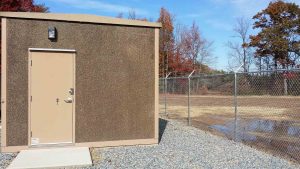5G deployment may be several years away, yet it is already proving to be a major disrupter of the status quo.
In preparing their networks to handle the massive demands for more bandwidth, new applications, lower latency and ubiquitous coverage, mobile network operators (MNOs) have begun the process of small cell 5G networks densification in their existing 4G networks. The result is a significant increase in the number of small cells being installed.
What defines a small cell 5G Network?
The definition for “small cell” has broadened as applications have increased. According to Small Cell Forum, the term describes any operator-controlled, low-powered radio access node, including those that operate in licensed spectrum and unlicensed carrier-grade Wi-Fi. This includes microcells, picocells, femtocells and metrocells that typically have a range from 10 to several hundred meters.
The current efforts represent a small percentage of the millions of new small cells that will be needed to deliver the much-anticipated promises of 5G. As small cell deployment continues to increase, mobile network operators are facing a host of fundamental challenges, including how to deliver power to each individual node without breaking the bank.
The challenges of small cell 5G densification
Between 2015 and 2025, new nonresidential small cell deployments are expected to grow at a compound annual rate of 36 percent, to reach almost 8.5 million—22 times higher than in 2015.
A recent survey indicated that 40 percent of operators expect to deploy between 100 and 350 small cells per square kilometer (indoors and outdoors) in the areas they densify by 2020.
While estimates regarding the degree of small cell density vary, the consensus is that mobile network operators will require more than 10 small cells per current macro cell in urban areas to densify their networks in the next few years.
Thus far, the key driver of small cell growth is the need for more coverage and capacity in heavily populated urban and suburban areas environments for which small cells are perfectly adapted. Compact, discreet and able to support beamforming and massive MIMO, they enable ubiquitous, high-capacity coverage within urban canyons and suburban shopping districts.
As the need for ubiquitous, high-density coverage increases, small cells must move closer to subscribers in order to support new higher-frequency wireless services and stricter signal quality requirements. This will involve locations that are more discreet and compact lamp posts, utility poles, street furniture including signs.
The advanced capabilities of today’s 5G-ready small cells mean added power requirements. Increased data traffic requires more computational power. Although massive MIMO can help improve spectral efficiency, power efficiency is generally lower and a typical three-sector small cell can require 200–1,000 watts of power.
The challenge is how to get power to large numbers of small cells in a cost-effective and repeatable way that supports fast and efficient rollouts. The first step involves recognizing that the traditional model for powering macro cell sites does not apply to small cells.
Mobile Network Operators are used to the deliberate and structured process involved in permitting, building and provisioning their macro cell locations. Each tower location is carefully planned and site specific in order to eliminate any on-site surprises once construction begins.
Small cell 5G networks densification requires a wholesale shift in that mindset. The sheer number of small cells needed means operators must accelerate deployment with “cookie-cutter” processes.
At the same time, they must be equipped and agile enough to adapt their siting, backhaul and power solutions on the fly. There are also power-specific challenges operators must address.










